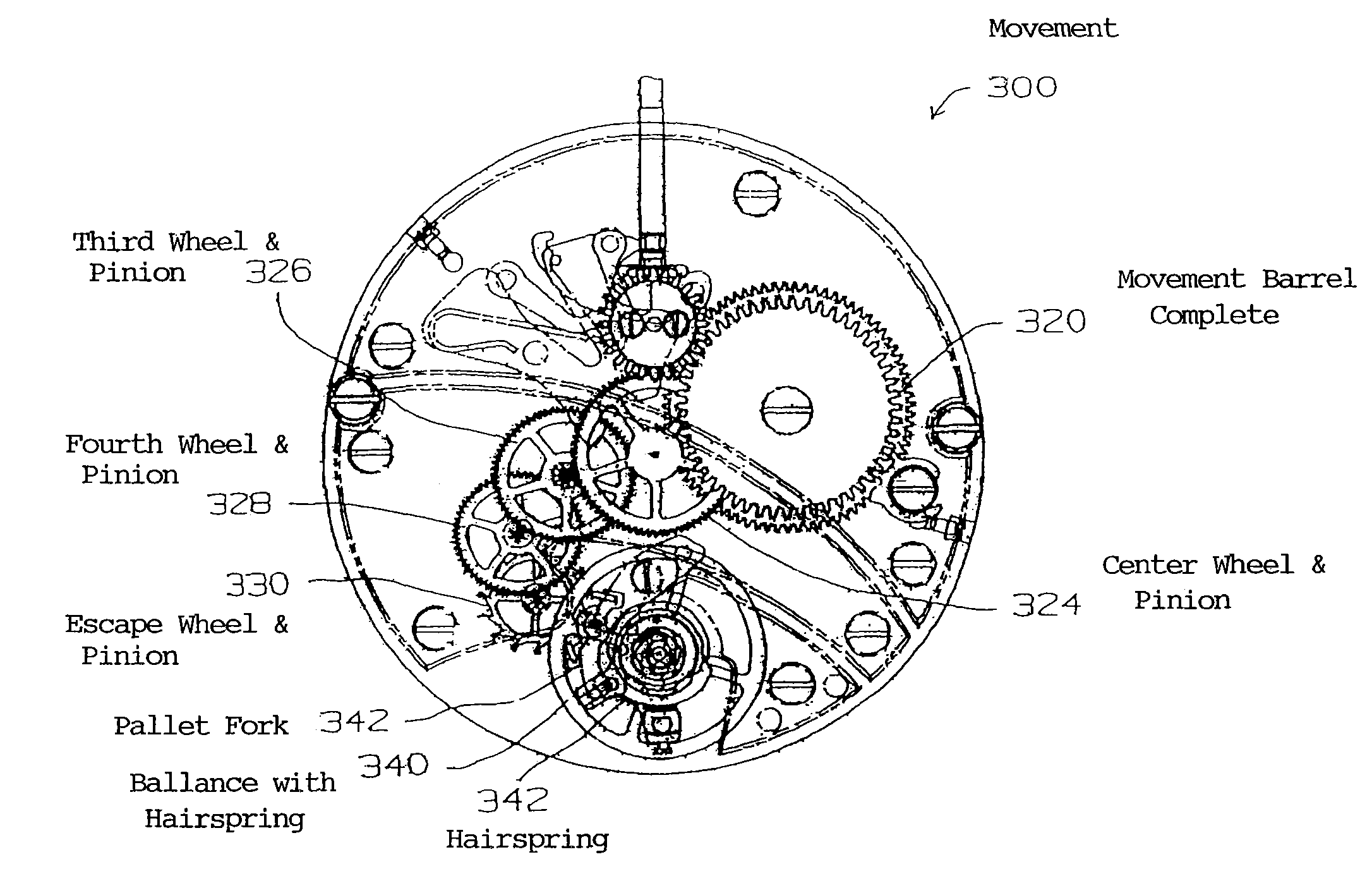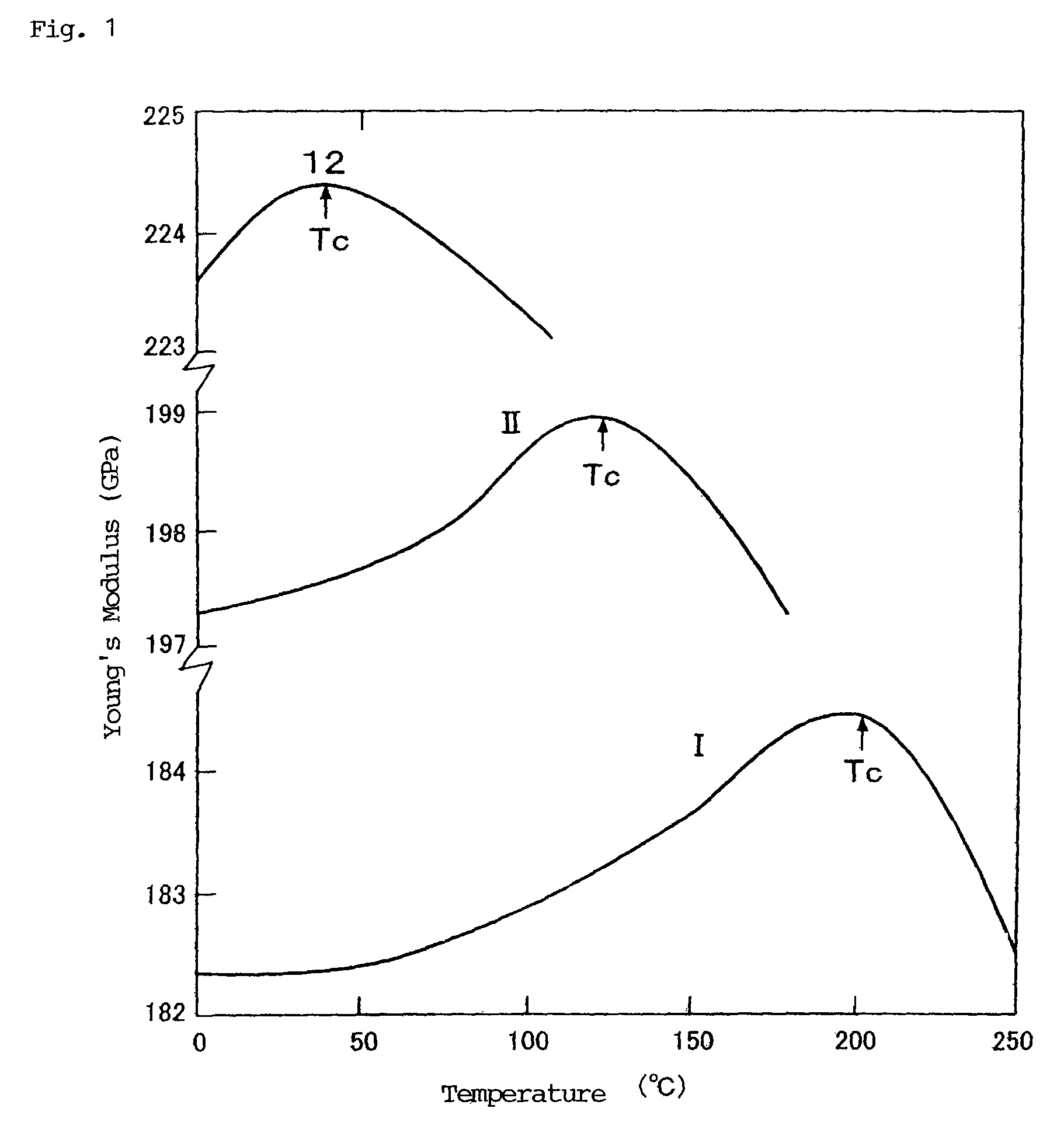Magnetically insensitive, highly hard and constant-modulus alloy, and its production method, as well as hair spring, mechanical driving apparatus and watch and clock
a constant-modulus alloy, highly hard technology, applied in the direction of anti-magnetic alloy usage, instruments, furnaces, etc., can solve the problems of inability to achieve the constant-modulus property of a single crystalline multi-component alloy, and the relationship between the texture and constant-modulus property is not elucidated, so as to achieve low temperature coefficient, weak magnetic effect, and high young's modulus
- Summary
- Abstract
- Description
- Claims
- Application Information
AI Technical Summary
Benefits of technology
Problems solved by technology
Method used
Image
Examples
example 1
Production of Alloy No. 12 (Composition Co=32.0%, Ni=15.0%, Cr=11.6%, Mo=3.0%, Fe=Balance)
[0055]Raw materials used were electrolytic iron having a 99.9% purity, electrolytic nickel, electrolytic cobalt, electrolytic chromium and molybdenum. A sample was produced as follows. The raw materials weighing 1.5 kg in total were loaded in an alumina crucible, and were melted in a high-frequency induction furnace under vacuum, followed by thorough stirring to provide a homogeneous molten alloy. The molten alloy was poured into a mold having a cavity of 30 mm in diameter and 200 mm in height. The resultant ingot was forged into a round bar having a diameter of 20 mm at approximately 1200 degrees C. The round bar was then heated at 1200 degrees C. for 1.5 hours to homogenize, followed by rapid cooling. The homogenized round bar was drawn at ordinary temperature to form a 10-mm wire. This wire was heated at 930 degrees C. for 2 hours under vacuum to thereby perform an intermediate annealing. Th...
example 2
Production of Alloy No. 24 (Composition Co=30.0%, Ni=15.0%, Cr=9.8%, Mo=3.0%, W=1.5%, Fe=Balance)
[0057]Raw materials used were electrolytic iron, electrolytic nickel, electrolytic cobalt, electrolytic chromium and molybdenum having the same purity as in Example 1, as well as tungsten having a 99.9% purity. A sample was produced as follows. The raw materials weighing 1.5 kg in total were loaded in an alumina crucible, and were melted in a high-frequency induction furnace under argon protective gas having a total pressure of 10−1 MPa, followed by thorough stirring to provide a homogeneous molten alloy. The molten alloy was poured into a mold with a square cavity having sides of 28 mm each and a height of 200 mm. The resultant ingot was forged at approximately 1250 degree C. into a square bar having sides of 18 mm each. The square bar was then hot rolled at between 1100 degrees C. and 1200 degrees C. into a round bar having a diameter of 10 mm. The round bar was then heated at 1250 deg...
PUM
| Property | Measurement | Unit |
|---|---|---|
| saturation magnetic flux density | aaaaa | aaaaa |
| saturation magnetic flux density | aaaaa | aaaaa |
| saturation magnetic flux density | aaaaa | aaaaa |
Abstract
Description
Claims
Application Information
 Login to View More
Login to View More - R&D
- Intellectual Property
- Life Sciences
- Materials
- Tech Scout
- Unparalleled Data Quality
- Higher Quality Content
- 60% Fewer Hallucinations
Browse by: Latest US Patents, China's latest patents, Technical Efficacy Thesaurus, Application Domain, Technology Topic, Popular Technical Reports.
© 2025 PatSnap. All rights reserved.Legal|Privacy policy|Modern Slavery Act Transparency Statement|Sitemap|About US| Contact US: help@patsnap.com



